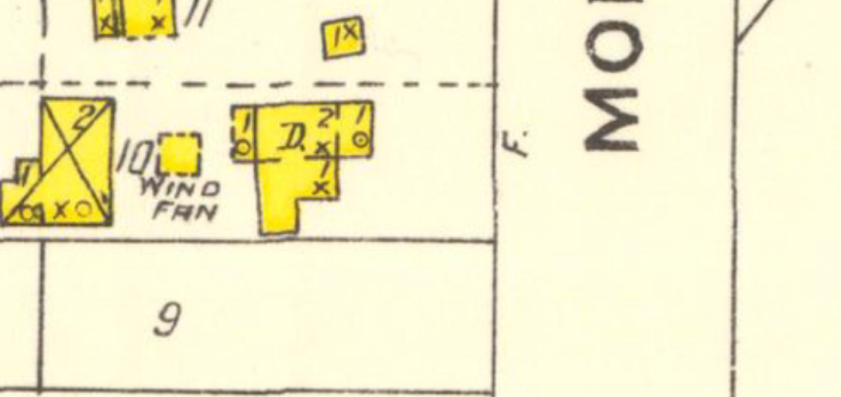Laster Cottage
Known Name(s)
Laster Cottage
Address
419 Morris Ave. Spring Lake Beach, NJ
Establishment Type(s)
Resort
Physical Status
Extant
Description
Laster Cottage, located on the west end of Morris Avenue in tony Spring Lake, is perhaps extant, the home on the lot today possibly the frame house imaged on the 1905 Sanborn insurance map.
Sources: Sanborn Map Co., Insurance Maps of New Jersey Coast, New Jersey, Vol. 3 (1905), sheet 5.
Detailed History
Laster Cottage is the sole listing in Spring Lake, a shore town in southern Monmouth County. In the late 19th and early 20th centuries, Spring Lake developed as a high-end enclave for wealthy urbanites in pursuit of leisure. Still known locally as the “Irish Riviera” because of its large population of residents with Irish roots, Spring Lake remains an affluent town. Once filled with heart-stopping mansions, few old homes of any size remain from Spring Lake’s early decades as a fashionable seaside town for the monied class.
Leah and Preston Laster, an African-American couple, lived at 419 Morris Avenue for decades. According to the 1950 census, both were born around 1880, she in North Carolina and he in Arkansas. Mrs. Laster died in 1952. Mr. Laster, who had come to Spring Lake in the late 1890s, died in New Jersey in 1969 at the age of 96. The Laster home was the location of their highly successful family businesses that took advantage of the needs of the monied community in which they lived, and also catered to well-off African Americans.
The couple ran service-oriented businesses that spoke to the needs of their local community. As early as the 1920s, the Lasters regularly advertised their “licensed employment agency” in the classified section of the Spring Lake Gazette, offering “white and colored help furnished on short notice, with references.” In 1934, that newspaper reported that Mrs. Laster had been in business for 20 years, and praised her as having “won the confidence of the homeowners, hotel operators, and visitors … as well as people seeking employment.” The Lasters also ran a hand laundry from their home, which they advertised beginning in the 1930s.
Alongside these successful businesses, Laster Cottage itself was a well-known destination for African-American urbanites in search of leisure in an elegant atmosphere that a town like Spring Lake offered. While the business was listed in The Green Book from 1949 through 1967 as a vacation resort, as early as the teens The New York Age, the prominent African-American newspaper, chronicled who came and went from the fashionable address. In a 1922 ad emphasizing its proximity to New York and Philadelphia, Laster Cottage was characterized as “an ideal summer home with all city conveniences,” including electric lights, private baths, and fine food, alongside leisure activities that included beach bathing, sailing, and walks to the village center.
The clientele drawn to Laster Cottage can be gauged by a letter, now at University of Massachusetts, Amherst, from Mrs. Laster to W.E.B. Du Bois. Dated 9 August 1932 and written on Laster Cottage letterhead, Leah Laster, who clearly knew Dr. Du Bois, lamented that they could not accommodate the family in August, but had availability in September.
Sources: US census, 1920, 1930, and 1940; Laster, Leah. Letter from Leah Laster to W. E. B. Du Bois, August 9, 1932. W. E. B. Du Bois Papers (MS 312). Special Collections and University Archives, University of Massachusetts Amherst Libraries (https://credo.library.umass.edu/view/full/mums312-b062-i511); “First Class Hand Laundry,” Spring Lake Gazette, 6 September 1934 and 10 April 1947; “Laster Cottage,” The New York Age, 15 July 1922; “Laster Cottage,” Spring Lake Gazette, 15 July 1922; “Licensed Employment Agency,” Spring Lake Gazette, 22 April 1927; “Mrs. Leah Laster Here 20 Years,” Spring Lake Gazette, 16 August 1934; “Preston Laster, 96, Ex-Employment Agent,” Asbury Park Press, 25 February 1969.
J. Shaffer




